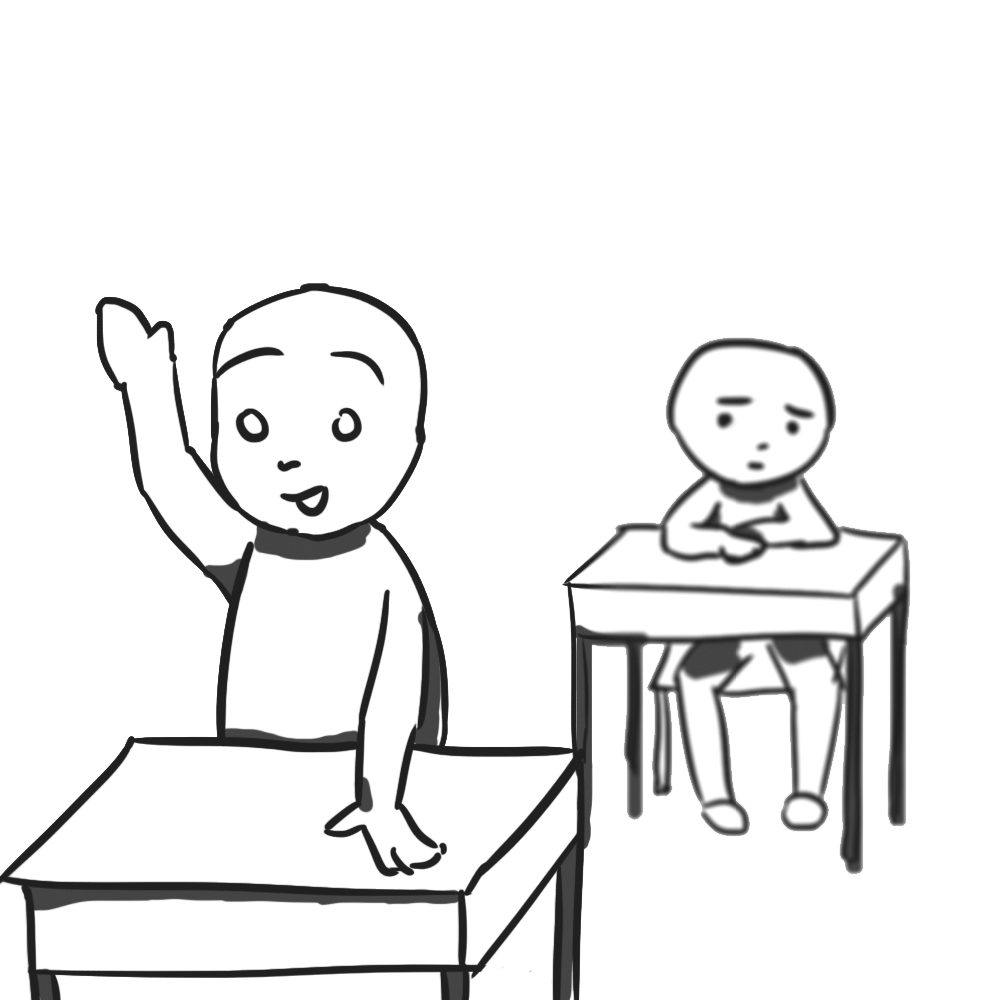

Ideally, the classroom is the great equalizer; a place where all students, regardless of gender or ethnicity, are treated fairly and have their voices heard. Interaction between a student and classroom environment is an integral part of education, yet there are those who are uncomfortable participating, or choose not to participate at all.
Even in classes where participation is a large portion of the class, junior Kira Daniel-Sartain participates more out of necessity than desire. “I don’t really like speaking out loud unless it’s a conversation just to another student or friend.”
Daniel-Sartain partially attributes her discomfort in speaking to the perceptions of others. Daniel-Sartain is Filipino, Caucasian and Hispanic. She feels that in language classes, people make assumptions: “[They] assume that I’m [just] Hispanic, and I feel that especially in Spanish class[es] I have higher expectations [to participate] because of that.”
This generalization is disheartening, especially considering Daniel-Sartain does not speak Spanish, and is trying to learn Spanish at the same level as everyone else. Daniel-Sartain remarks, “Just because of the way I look, I shouldn’t be expected to know Spanish.”
Outside of class-wide participation, Daniel-Sartain has also experienced stereotyping as a female when participating in group collaborative projects. During her sophomore year, she was assigned to an otherwise all male group for a project. She felt discouraged from contributing her knowledge; she recalls, “All the guys [took] on the project [by themselves] … like I know less or something.” Daniel-Sartain believes normalizing participation and equal speaking time is important, declaring, “My opinion is just as important as anyone else’s.”
Creating equal opportunity for minority students as well as ensuring gender equality is a task many organizations have dedicated themselves to. Notably, the Educational Opportunity Program has offered enrichment programs in the past for Aragon students, and it is a large organization within the UC and CSU college systems.
Such programs help advance students towards higher levels of education, including encouraging and assisting minority groups in taking AP or Honors classes through extracurricular enrichment. Daniel-Sartain is critical of such programs, and feels that many overcompensate just to make a school look good. Diversification, she asserts, should be first and foremost for the good of the individual minority student, and not just to have a more diverse group. Ultimately, Daniel-Sartain argues, “It should be the student’s choice … Everyone is different.”
The idea of an equal learning environment has been a forefront of CP History teacher Ms. Klein’s classroom. She intentionally randomizes who is speaking through the use of popsicle sticks, and she calls on raised hands with the intent of hearing from varied voices. As a result, Klein asserts, “I tend to not notice any big disparities between gender and race and who gets called on.”
Klein also balances discussion between whole class and groups of two or three, in which participation by all students is mandatory. “We do collaborative conversations in our class where students have to take turns speaking and practicing academic language … My focus is that all the students in the classroom feel their voice is being heard.”
As a CP teacher, Klein suggests, “Theoretically [students in AP classes] would be more interested in the topic to then want to share their opinion,” thus increasing classroom participation overall. However, she still notes that there will always be those who raise their hands more than others.
Regardless of participation levels, mutual respect tends to be the basis for all classroom interactions. Ms. Klein summarizes, “My goal [and that of many other teachers] is to have an environment … [in which all voices can] be heard and respected by the whole class.”




